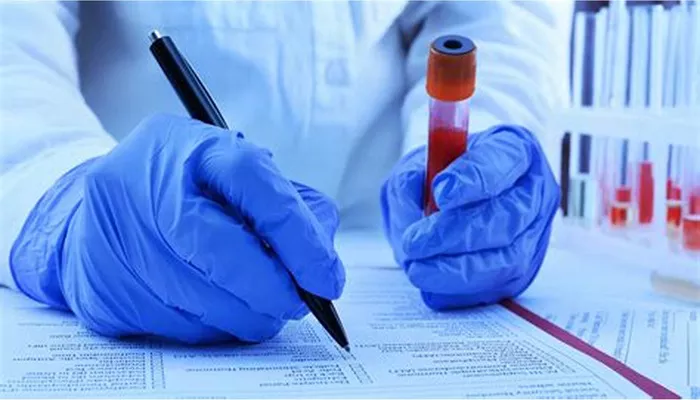Hyperlipidemia, commonly known as high cholesterol, is a condition characterized by elevated levels of lipids (fats) in the blood. These lipids include cholesterol and triglycerides, which are essential for various bodily functions but can lead to health problems when present in excessive amounts. Diabetes, a chronic condition affecting glucose metabolism, has been closely linked to hyperlipidemia. Understanding the relationship between these two conditions is crucial for effective prevention and management strategies.
Causes of Hyperlipidemia
Several factors contribute to hyperlipidemia, including:
Genetics: Familial hyperlipidemia is a genetic disorder that predisposes individuals to high cholesterol levels.
Diet: Diets high in saturated fats, trans fats, and cholesterol can increase lipid levels.
Lifestyle: Sedentary lifestyles, obesity, and smoking are significant risk factors.
Medical Conditions: Hypothyroidism, kidney disease, and certain medications can contribute to elevated lipid levels.
SEE ALSO: What Body System Is Hyperlipidemia?
Diabetes: An Overview
Diabetes mellitus is a group of metabolic disorders characterized by chronic hyperglycemia (high blood sugar levels) resulting from defects in insulin secretion, insulin action, or both. There are two primary types of diabetes:
Type 1 Diabetes: An autoimmune condition where the immune system attacks insulin-producing beta cells in the pancreas.
Type 2 Diabetes: A condition where the body becomes resistant to insulin, or the pancreas fails to produce sufficient insulin.
Risk Factors for Diabetes
The development of diabetes is influenced by a combination of genetic and environmental factors, including:
Obesity: Excess body weight, particularly abdominal fat, increases insulin resistance.
Sedentary Lifestyle: Lack of physical activity contributes to weight gain and insulin resistance.
Unhealthy Diet: Diets high in refined sugars and fats can impair glucose metabolism.
Genetics: Family history plays a significant role in diabetes susceptibility.
The Link Between Hyperlipidemia And Diabetes
Research has demonstrated a bidirectional relationship between hyperlipidemia and diabetes, where each condition can influence the development and progression of the other. Understanding the mechanisms underlying this relationship sheds light on potential therapeutic approaches.
Insulin Resistance
One of the primary mechanisms linking hyperlipidemia to diabetes is insulin resistance. Insulin resistance occurs when cells in the body become less responsive to insulin, a hormone crucial for glucose uptake. This resistance leads to elevated blood glucose levels and eventually type 2 diabetes. Hyperlipidemia contributes to insulin resistance through several pathways:
Ectopic Lipid Accumulation: Excessive lipids in the bloodstream can deposit in tissues such as the liver and muscles, impairing their ability to respond to insulin.
Inflammation: Elevated levels of triglycerides and LDL cholesterol can trigger chronic inflammation, which interferes with insulin signaling pathways.
Adipocyte Dysfunction: Fat cells (adipocytes) release free fatty acids and pro-inflammatory cytokines in response to high lipid levels, exacerbating insulin resistance.
Pancreatic Beta-Cell Dysfunction
Hyperlipidemia can directly affect pancreatic beta cells, which are responsible for insulin production. Chronic exposure to elevated lipid levels, particularly saturated fats, can lead to beta-cell dysfunction and apoptosis (cell death). This process, known as lipotoxicity, reduces the pancreas’s ability to produce insulin, contributing to the development of diabetes.
Atherosclerosis and Cardiovascular Disease
Individuals with hyperlipidemia are at an increased risk of developing atherosclerosis, a condition characterized by the buildup of plaque within arterial walls. Atherosclerosis can impair blood flow and lead to cardiovascular complications, which are common in diabetic patients.
The presence of both hyperlipidemia and diabetes significantly amplifies the risk of cardiovascular diseases, creating a vicious cycle that exacerbates both conditions.
Genetic Factors
Genetic predispositions play a crucial role in the co-occurrence of hyperlipidemia and diabetes. Certain genetic variations can influence lipid metabolism and insulin sensitivity, making individuals more susceptible to both conditions. For example, polymorphisms in genes involved in lipid transport and insulin signaling pathways can contribute to the development of hyperlipidemia and diabetes.
Impact of Lifestyle And Diet
Lifestyle and dietary habits are pivotal in modulating the risk of both hyperlipidemia and diabetes. Adopting healthy habits can mitigate the impact of these conditions and improve overall health.
Diet and Nutrition
A balanced diet is essential for managing lipid levels and glucose metabolism. Key dietary recommendations include:
Reducing Saturated and Trans Fats: Limiting the intake of saturated fats (found in red meat and dairy products) and trans fats (found in processed foods) can lower LDL cholesterol levels.
Increasing Fiber Intake: Consuming fiber-rich foods, such as whole grains, fruits, and vegetables, helps improve lipid profiles and insulin sensitivity.
Omega-3 Fatty Acids: Incorporating omega-3 fatty acids from sources like fatty fish, flaxseeds, and walnuts can reduce triglyceride levels.
Limiting Refined Sugars: Reducing the consumption of sugary beverages and snacks helps maintain stable blood glucose levels.
Physical Activity
Regular physical activity is a cornerstone of managing both hyperlipidemia and diabetes. Exercise improves insulin sensitivity, promotes weight loss, and enhances cardiovascular health.
Recommendations include:
Aerobic Exercise: Activities such as walking, jogging, swimming, and cycling improve cardiovascular fitness and lipid profiles.
Strength Training: Resistance exercises help build muscle mass and improve glucose metabolism.
Consistency: Engaging in at least 150 minutes of moderate-intensity exercise per week is beneficial for managing both conditions.
Pharmacological Interventions
In cases where lifestyle modifications are insufficient, pharmacological interventions may be necessary to manage hyperlipidemia and diabetes effectively.
Medications for Hyperlipidemia
Statins: These drugs lower LDL cholesterol levels by inhibiting an enzyme involved in cholesterol synthesis. They also have anti-inflammatory properties that benefit cardiovascular health.
Fibrates: Fibrates primarily reduce triglyceride levels and can also increase HDL cholesterol.
PCSK9 Inhibitors: These newer agents lower LDL cholesterol by enhancing the liver’s ability to remove it from the bloodstream.
Medications for Diabetes
Metformin: Metformin improves insulin sensitivity and reduces glucose production in the liver.
Insulin Therapy: For individuals with advanced diabetes, insulin therapy may be necessary to regulate blood glucose levels.
GLP-1 Receptor Agonists: These drugs enhance insulin secretion and promote weight loss.
Conclusion
Hyperlipidemia and diabetes are intricately linked through complex metabolic pathways involving insulin resistance, beta-cell dysfunction, and cardiovascular complications. Addressing the underlying causes and adopting a holistic approach to lifestyle and dietary modifications are essential for managing both conditions. Additionally, pharmacological interventions can provide effective control when lifestyle changes alone are insufficient.

